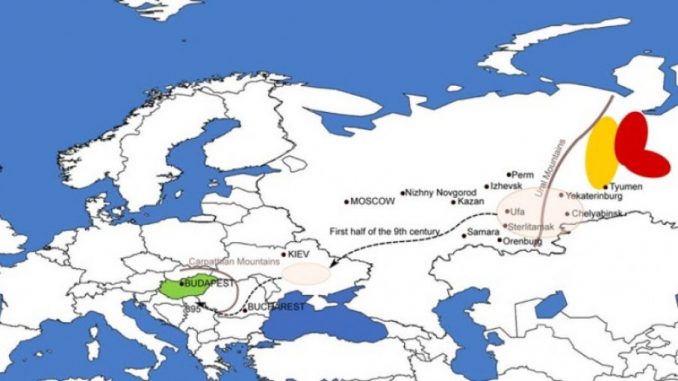
A research team led by archaeogeneticist Lehti Saag from the University of Tartu in Estonia has published new research in the journal Current Biology that seems to finally answer this unresolved question. By combining genetics with archaeology and linguistics, the team has shown that Uralic language speakers reached the Baltic at the beginning of the Iron Age some 2,500 years ago. What’s more, the migrating Siberians brought more than just their language with them—they also brought their DNA, the traces of which can still be seen in northern European populations.
„Az ugor jellegű gén azonban nem azt jelenti, hogy az az ember, akitől a génminta származik ugorul beszélt volna, hanem azt, hogy az akkor élt ember olyan területről származik, amelyet feltehetően valamilyen ős-ugor, obi-ugor esetleg magyar nyelvet beszélő embercsoport népesített be” – teszi helyre a félreérthető rövidítést a tanszékvezető.
Jók a Gizmos cikkek, de a Qubiton megjelent pontosítás (Hogyan mászott be a genetika a nyelvészet porcelánboltjába) kell hozzá. Mi több, sokkal jobb és pontosabb képet kapunk, ha csak Klima László, az ELTE Magyar Nyelvtudományi és Finnugor Intézetének tanszékvezetője magyarázatát olvassuk.
Source: Analysis of Ancient DNA Suggests Finnish and Estonian Languages Came From Siberia